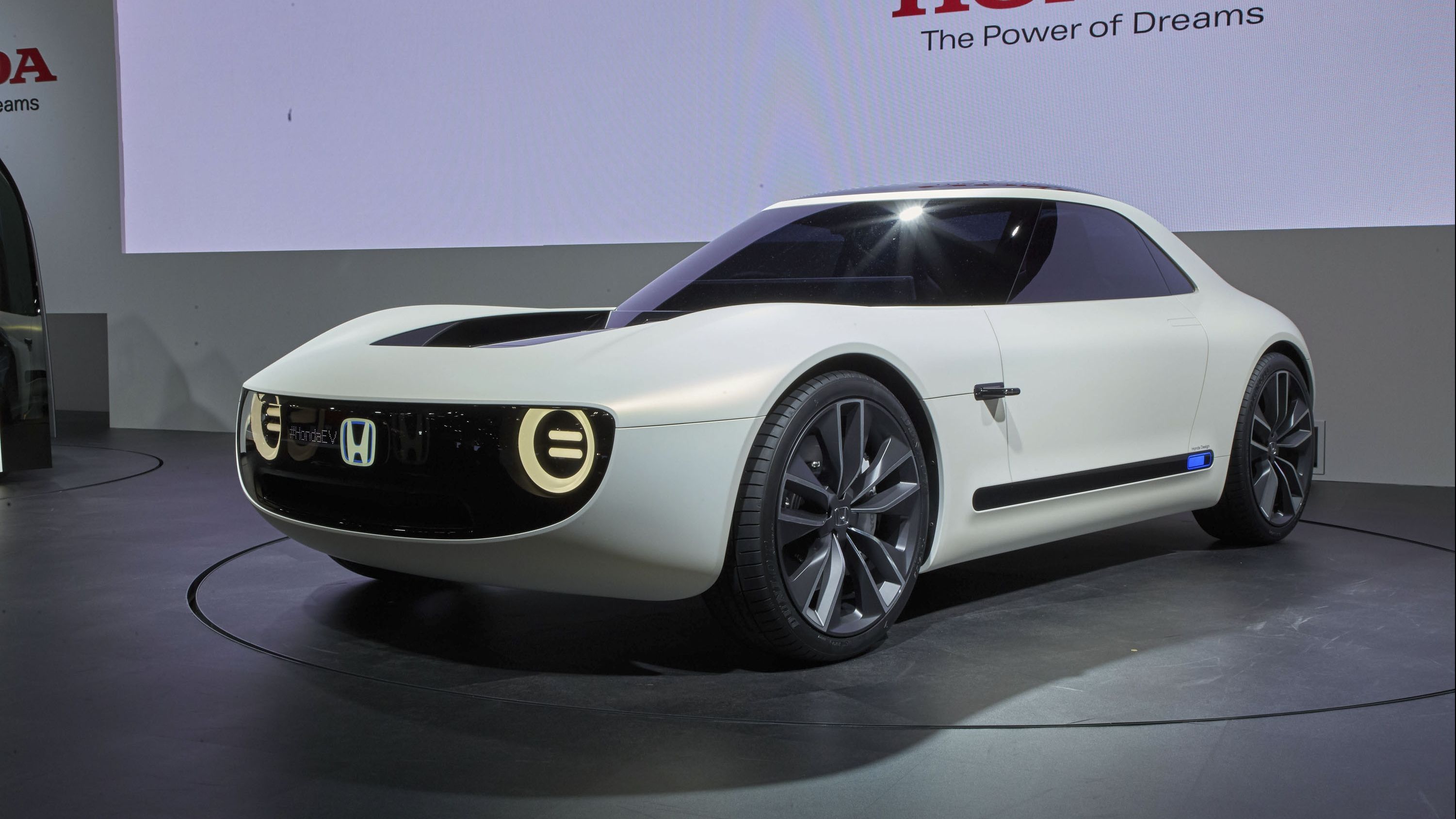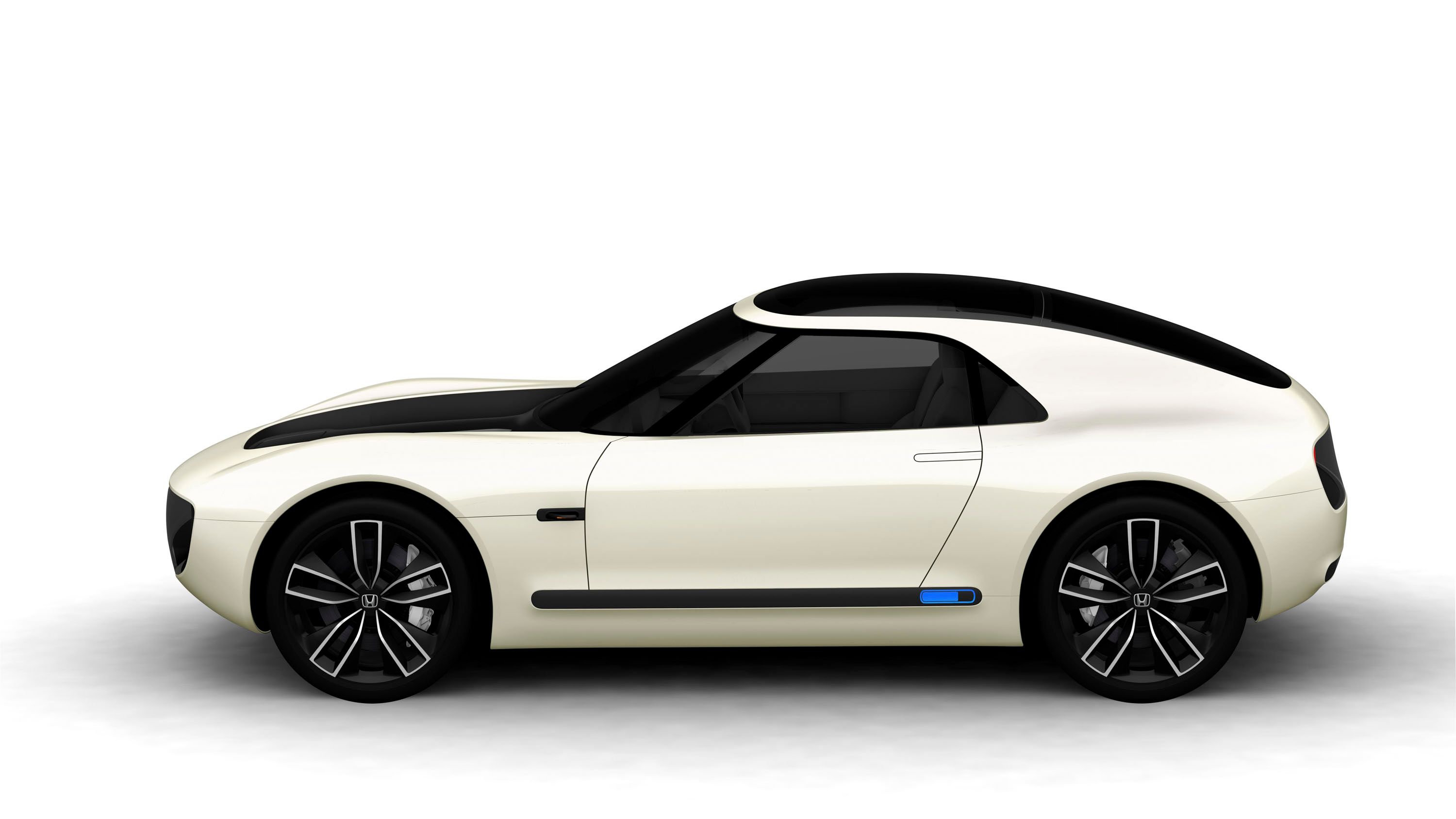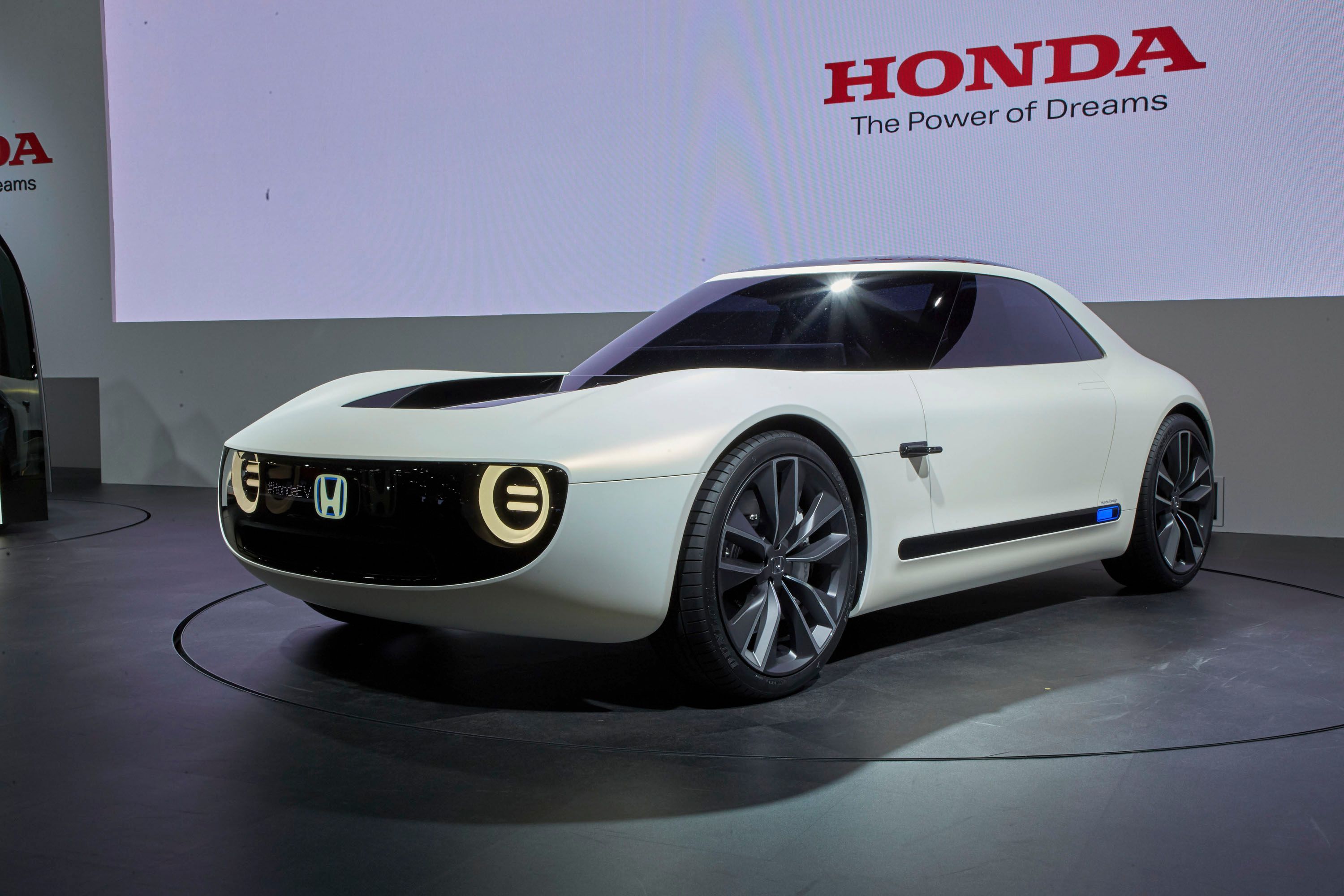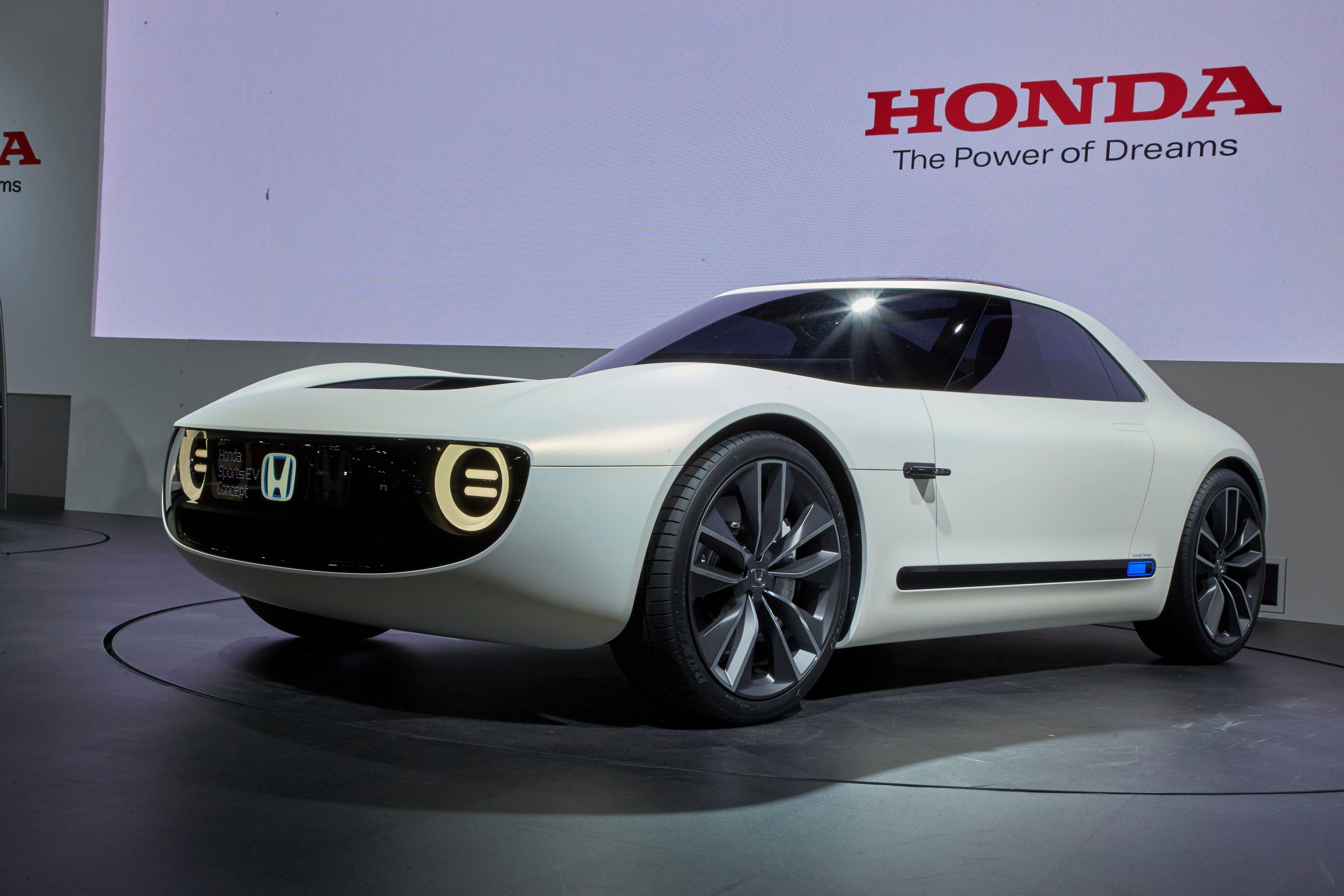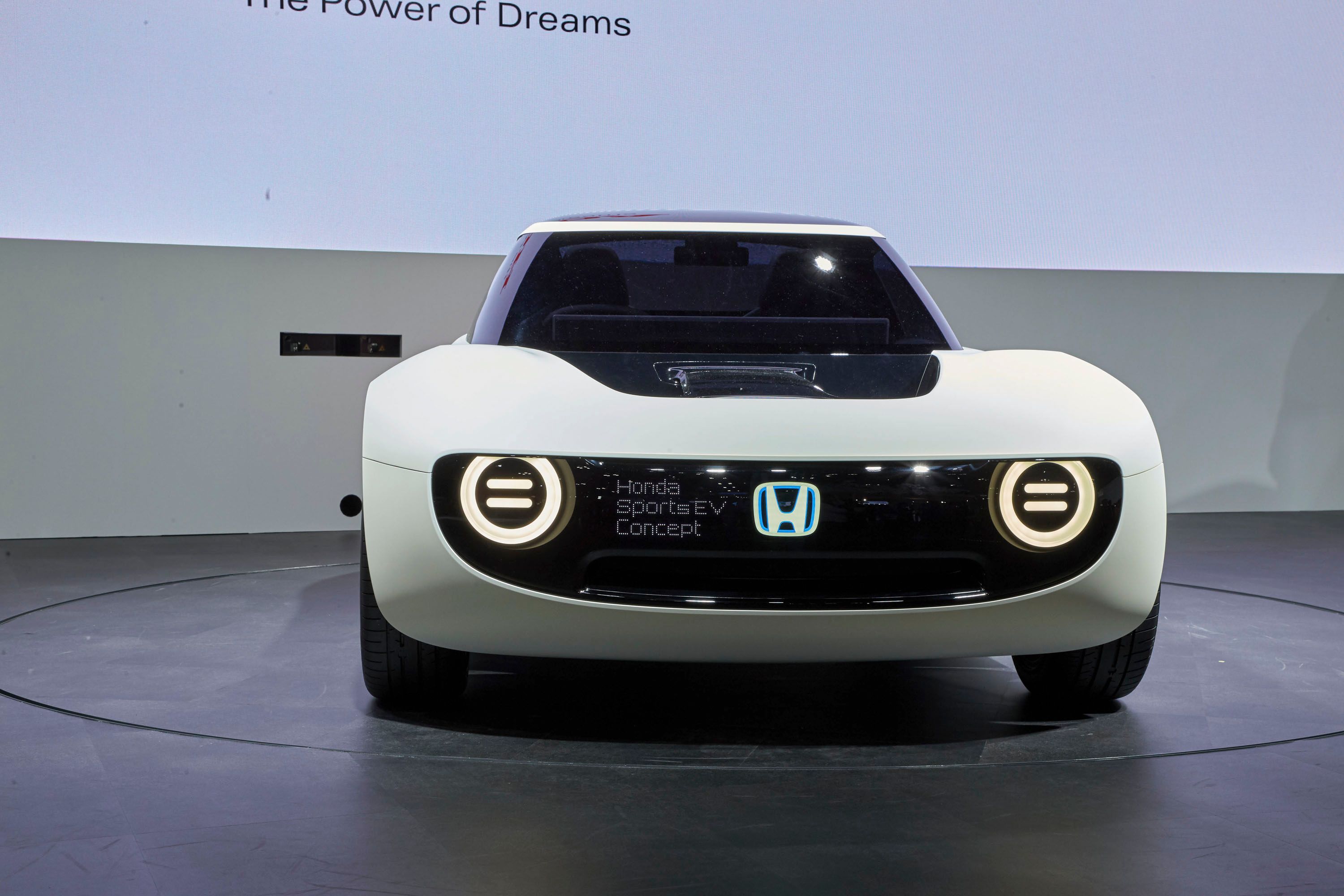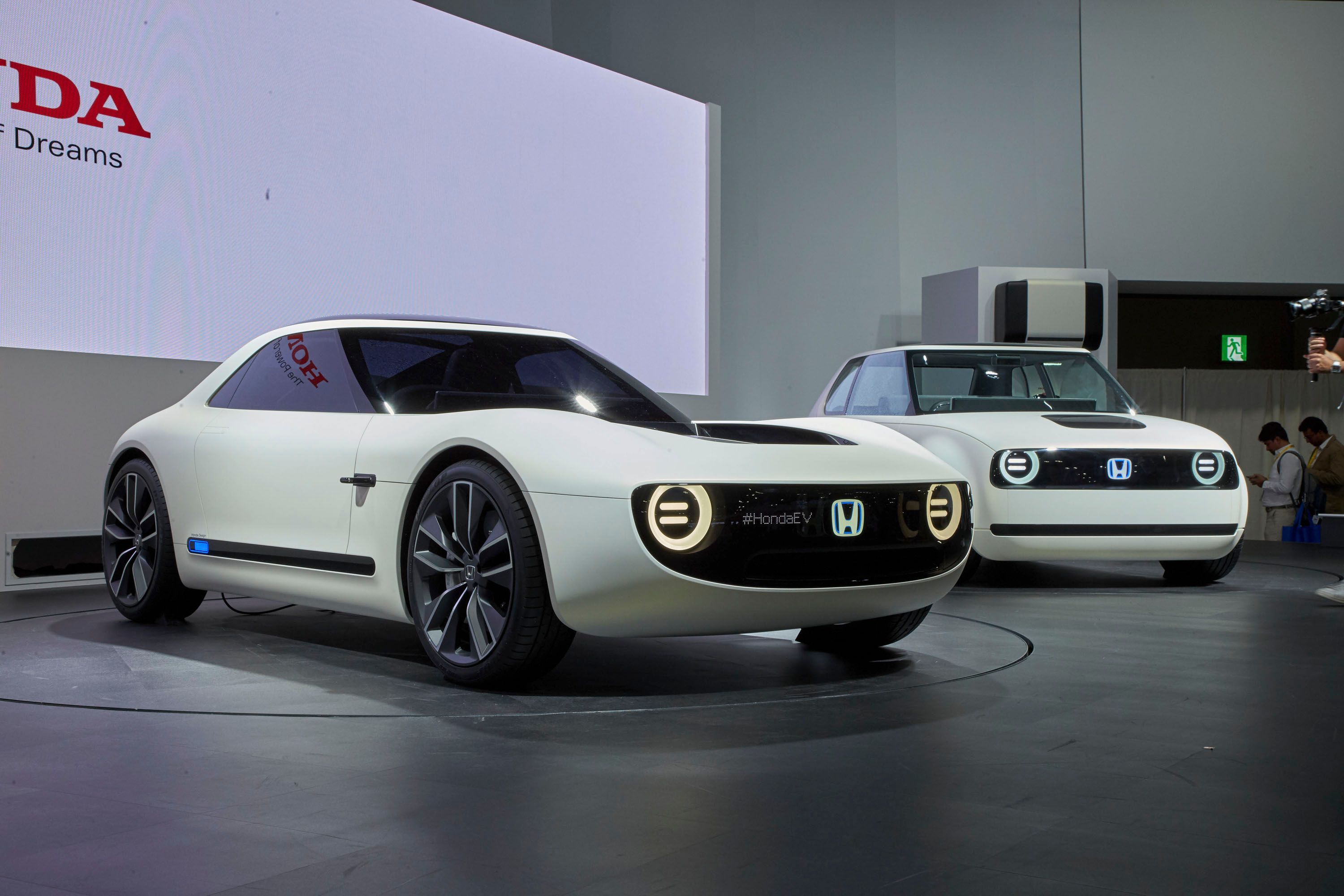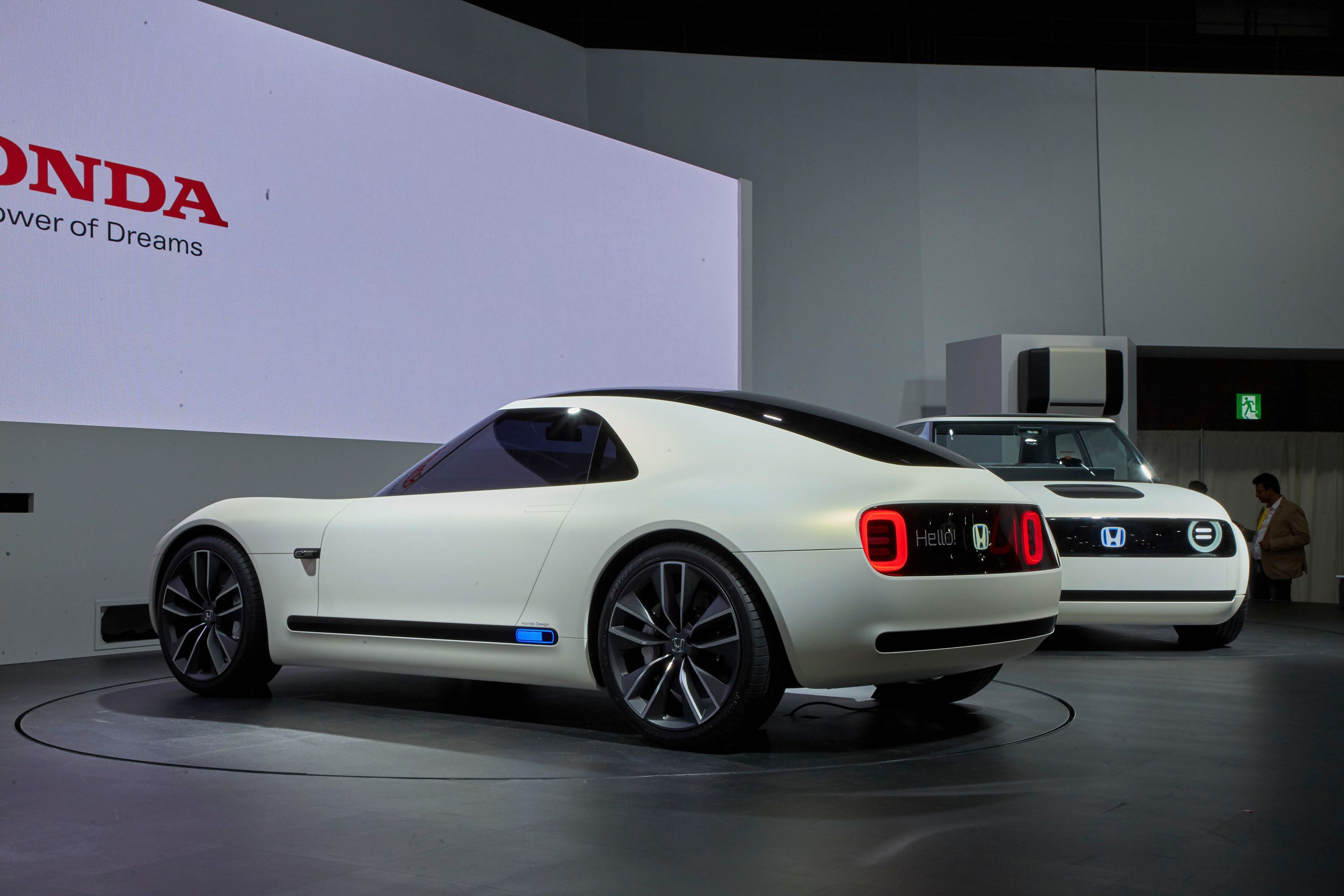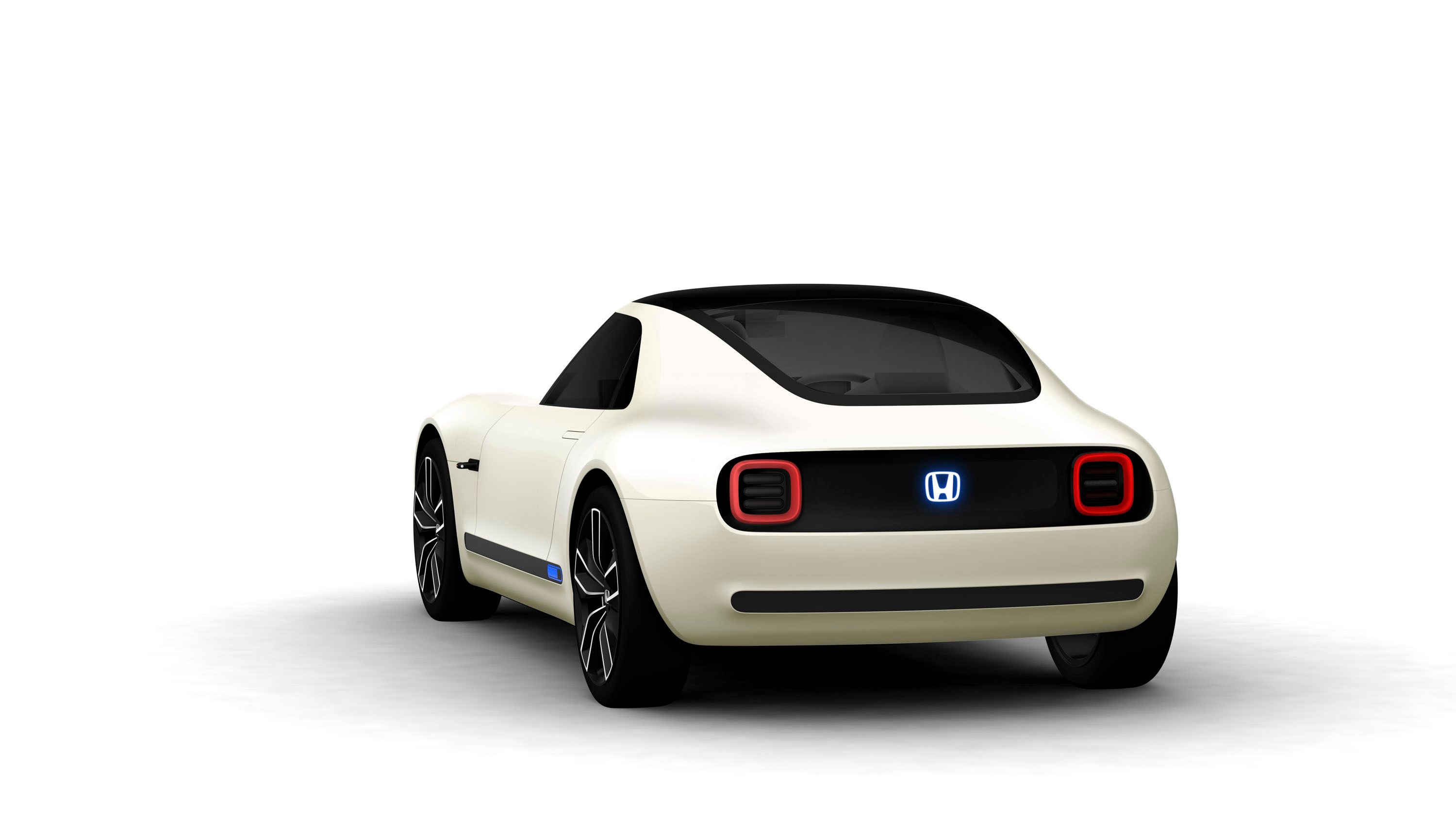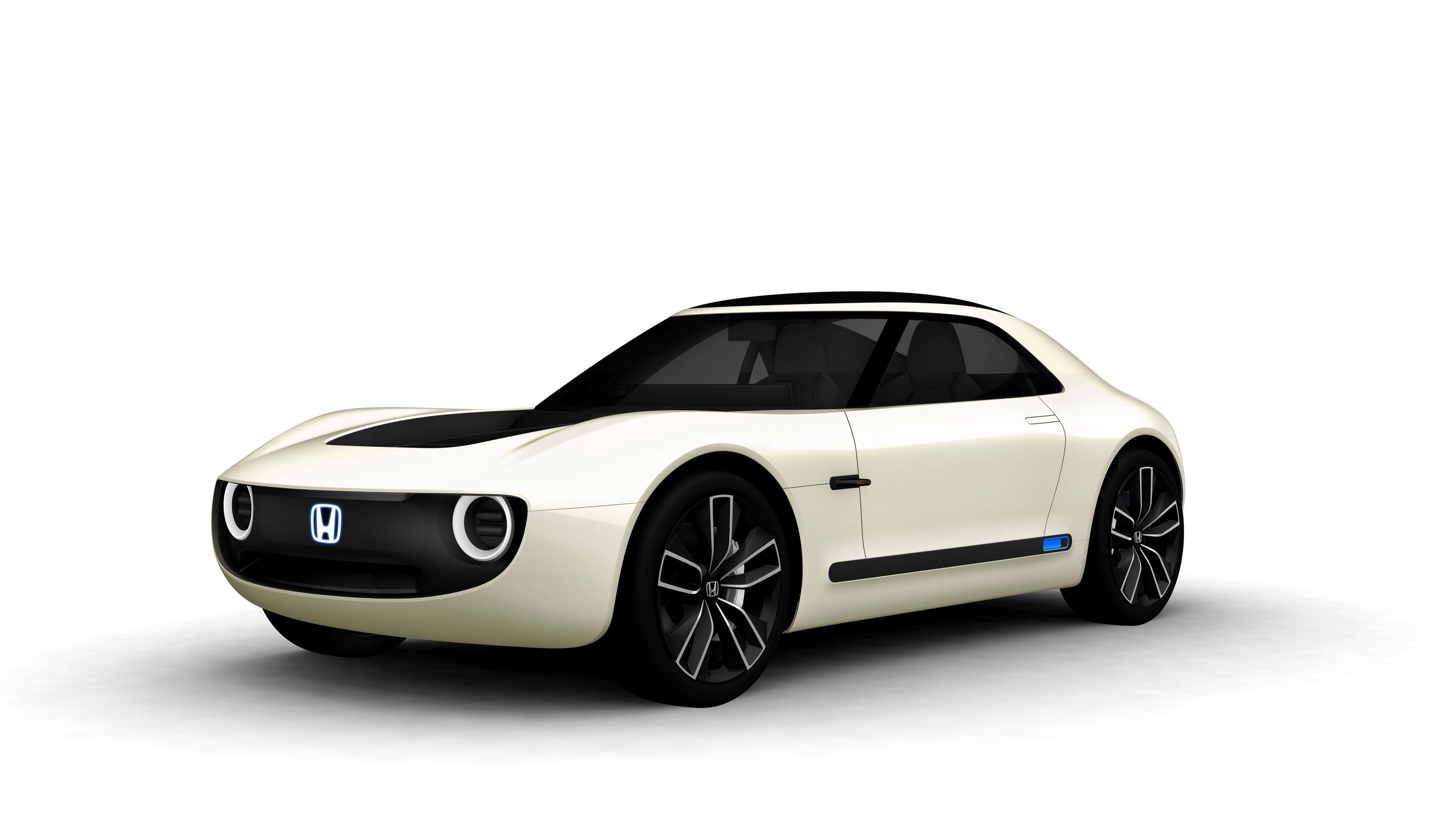When Honda debuted the Urban EV Concept at the 2017 Frankfurt Auto Show, I was quick to scrutinize the brand for building something so weird, but as I looked at it more, it began to grow on me. And, it’s a good thing it did because that thing is slated for production for the European market sometime in 2019. And, to really top it off, Honda showed up to the 2017 Tokyo Auto Show with a sports car that looks quite familiar – the Honda Sports EV Concept. Following suit with the previous concept, it carries the same general styling cues in a futuristic but feasible package. Of course, it’s a sports car, so it doesn’t have that love seat up front, but it is quite sporty for what it is, and it could just as easily shift into production thanks to being built upon the same platform used for the last concept.
Unlike the last concept, however, we have next to no information. And, Honda didn’t even take the time to release interior shots of the concept either. We can tell that it has that massive display screen and that it’s missing the couch, but outside of that, we can’t see much. But, that doesn’t mean that this little battery-powered sports car should be overlooked. Out of all the EV sports car concepts we’ve seen, this is the one we really want to see become a reality, so let’s take a good look and see what’s crackalackin.
2017 Honda Sports EV Concept
- Make: Array
- Model: 2017 Honda Sports EV Concept
- [do not use] Vehicle Model: Array
Exterior
If you’re thinking that this thing looks kind of like a funky Hot Wheels car, well, I couldn’t really blame you because it kind of does. But, at the same time, it also has a bit of a sporty nature to it. When I first looked at it, I had the same reaction I did with that funky little Urban EV Concept – “what the hell is Honda thinking” – but the more I looked at it, explored its lines, made love to its curves with my eyes, I realized that I wouldn’t be upset at all if Honda sent this thing rolling into dealers. In fact, I’d be pretty damn happy and would be one of the first in line with a big dumb smile on my face waiting to sign over an arm, a leg, and a testicle to own one. Range-anxiety and ICE sole be damned, this thing is freaking cool. It’s got the modern but circular headlights that point back to the original Civic, and it’s got those muscular front wheel arches that just scream sports car. That big illuminated G in the center of the nose is quite attractive too – kind of like it’s saying “yeah, that’s right; I’m a Honda.” In a world where everyone, including Honda, has gone overboard with the sharp body lines, massive fake vents, and over-styling, the Sports EV (and the Urban EV, for that matter) are a breath of fresh air.
The side profile is dominated… well, wait. It isn’t dominated by anything, and that’s the beauty of it. Sure, there are big wheels, but they aren’t too big, and they wear thick enough rubber that they don’t look stupid. I doubt those cameras will make into production until regulations change, but some sporty little chrome mirrors would look pretty good hanging on the doors, don’t you think? It’s hard to see, but there are door handles that sit flush with the doors and the way that roof slants down at the B-Pillar, then widens as it hits the rear quarters is something that should rewrite the book of future car design. Honda did tint the windows here to keep folks from getting too good a look inside, but you have to admit, blacking out the windows adds quite the stylish touch too, doesn’t it?
Around back, the bubbly look of the body, and the extent of that all-glass roof is painfully obvious and sexy at the same time. The body wraps around the class like a blanket around a newborn baby, and the contrast between the white and the black is just what the doctor ordered. That smooth rear bumper is as fresh as it is simple and those square taillights that carried over from the original concept really seem to fit in well. Just like its bigger brother, the front and rear displays can be programmed to display messages. All told, it’s sporty and attractive and is certainly what I expect future cars from Honda to actually look like. The question now is whether or not Honda can put something like this into production. I certainly hope so.
Interior
|
Interior from Honda Urban EV Concept shown here |
Honda didn’t take the liberty to release shots of the Sports EV Concept’s interior, but considering the fact that it is based on the Urban EV Concept, we have a pretty good idea. When you look at the outside, you can see that massive screen stretching across the dash. There’s no telling what size it is, but it seems to be at least 30-inches wide and about 10-12 inches tall. Since this is a sports car concept and not an urban lounge-mobile, there’s not going to be a couch behind the wheel, but instead, a pair of supportive racing seats. If Honda doesn’t go aftermarket, it will most definitely tap into Acura for seats similar to those found in the new NSX.
Of course, this thing is all-electric, so what you see is really what you get. There isn’t a need for huge gauge clusters or anything of that nature. However, there could be a few gauges to measure G-force, acceleration, pitch, and battery life. These could be positioned in the face of the dash below the screen where there’s simple wood trim in the EV concept. In production form, I would expect to see some carbon fiber here for the sports car because, well, it’s a sports car. Instead of plush carpeting, I would expect to seat carbon floorboards or even Alcantara layered floors. The side view screens on the door trim panels will carry over, but I would expect there to be a better sound system as sports cars gotta have that good sound too.
I suspect the car would be a two-seater as it’s a rather small sports car and trying to fit someone in the back would certainly be difficult. On the plus side, however, that means there should be plenty of room in the rear hatch. And, to top it off, the car does feature that massive glass roof, just like the Urban EV, so those riding up front get a pretty gnarly view of the sky at night.
Drivetrain
What’s “Under the Hood” is actually a complete mystery. Honda didn’t even divulge details about the Urban EV’s drivetrain, and it sure didn’t spill the beans about this concept either. Of course, that wouldn’t matter considering one is meant for lounging and chillin while another is meant to bend corners and tear up those straightaways. So what could be lurking under that sweet, sexy, rounded body that makes this an “according-to-Hoyle” sports car?
Well, first of all, Honda will likely position the battery across the length of the floor between the two axles. This will be a high-density lightweight battery that also takes advantage of Honda’s new Power Manager Concept to keep things as efficient as possible. As far as motors go, Honda has a couple of options:
Front Motor Setup
If Honda wanted this thing to be front-wheel drive only, and that is kind of Honda’s calling card, then Honda could position a rather powerful motor up front while the battery can be positioned just to the rear a bit to provide the perfect offset for as close to a 50:50 weight distribution as possible. Honda could also move the battery further to the rear, and place two motors that are a little less powerful but deliver equal amounts of power. This would allow the onboard computers to adjust torque delivery as needed to combat over-and understeer with ease. Again, the more weight put up front, the further to the rear the battery needs to be. A setup like this could include a single, 300-horsepower motor or dual 170-horsepower motors for a total output around 340 ponies. I would prefer the latter – not only because it’s more powerful but because torque distribution on demand is where it’s at in the sports car world.
Rear Motor Setup
Much like the front-motor setup described above. A rear motor setup could work the same way. A single 300-horsepower motor could turn both wheels with the battery positioned just a bit toward the front axle. Or Honda could go the preferred way and use a dual motor setup with more power and torque vectoring. Now, I’m sure I don’t have to tell you that, as a sports car, this thing almost needs to be rear-wheel drive, so we all really hope this thing ends up as rear wheel drive if it ends up in production. But, there’s another approach that could prove fatal to other models in the compact sports car segment.
All-Wheel Drive
If Honda really wanted to set the market on fire, it would bring this thing into production with AWD as standard equipment. Not only would that make it one mean little sports car, but it would offer something that cars like the Mazda Miata, Subaru BRZ, Toyota 86, and even the Audi TT can’t – power to all four wheels. Honda could do it with a two motor setup, or it could go with a motor for each wheel. The latter would be preferred as it would offer some serious torque vectoring possibilities and some amazing spirited driving. Both setups would allow the battery to be positioned right in the middle for a near-50:50 weight distribution, but they would have to be powerful enough to handle the extra weight.
Range Woes
The biggest problem with an all-electric sports car such as this is its size. Yeah, they are fun to drive, but when you’re relying on battery power alone, your supply of go-juice is limited. I speculated that something like the Urban EV would have around 150 miles of range, which wouldn’t be bad for a vehicle of its caliber. But, a sports car needs a little more. Honda needs to be able to deliver at least 250 miles with this car for it to really pose a threat to anything else on the market – gas or electric. With this thing potentially available by the turn of the decade, Honda could be one of the first to put a true EV sports car this small on the market – one with decent range and power.
But, and that’s a big but, Honda has to do it right. The biggest limitation here is the car’s size. You can only fit so big of a battery in the floor. Of course, Honda could use the space in the front and rear for auxiliary batteries that would help increase range, but it would have to maintain a pretty even weight distribution and still can’t be too heavy, or this sports car is going to be a slug. When we’re talking about battery power, the heavier it is, the harder it is to go, the more power you need.
That doesn’t mean it isn’t possible. Hopefully, those lightweight, high-density batteries will be good enough to get the job done. Even at 200 miles, that would be ok, but 250 would be better. For now, we’ll just have to wait and see.
Conclusion
In the past, I have voiced very strong opinions against automakers going EV with all of their models. I’ve spoken out against it every way I can, even arguing that the ICE essentially has a soul and the lack of that wonderful combustion would, in turn, leave a hole in our hearts that cannot be replaced. Now, I’m looking at this car, and all I can think of is that this is the electric sports car that we really need. Hell, it’s the electric sports car that we really want. It’s small enough to be very maneuverable and has the opportunity to be potent enough to really pose a real threat to some great names that are already on the market. For now, this car is just a concept, but like the Urban EV, it could become a reality in the next few years. And that, my friends, is a very cool thing.
References
Read our full review on the 2017 Honda Urban EV Concept
Read more Tokyo Motor Show news.

